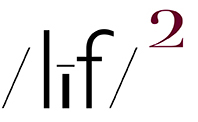One of my former assistants introduced me to one of his grandmother's pearls of wisdom ... "For every pot there's a lid". That pithy expression - coming from a time when a woman's place was in the home (more often than not, in the kitchen) - is essentially a re-working of the adage that there is
something for everyone.
That written, there can be no question, pots & lids / something for everyone wise, that truer words were never spoken / written about the medium of photography and its apparatus.
Some are in it for the love of gear - lenses, cameras, sensors, et al, some for the love of technique - shooting, processing, printing, and other minutia (resolution, dynamic range, sharpness, bokeh, et al). Some live by the picture making "rules", some make pictures using an inuituve seat-of-the-pants methodology. Some never saw a referent they couldn't make better than real life, some just picture it like it is. I could go on and on citing a nearly endless examples of what the medium and its apparatus means to many other personal proclivities. But, I think you get the point so why go on beating a dead horse.
iMo, here's the thing about the pot & lid adage ... I have written about it before but I will write it again, picture makers most often are the absolute worse audience on the planet, re: looking at pictures. As Bruce Davidson once proclaimed:
I am not interested in showing my work to photographers any more, but to people outside the photo-clique.
What would cause Davidson to state such a thing? iMo,it's the same reasoning that drives my belief, re: picture makers looking pictures .... most picture makers' first glance at a picture - their own and those made by others - with their own picture making proclivities at the fore. An act which throws up a barrier to experiencing a picture in an intuitive manner. That is, perceiving directly by intuition without rational thought.
iMo, the best manner in which to experience a piece of art is to bring to the viewing a Zen/empty mind-like state - which, btw, is also, iMo, best way to make art. To repeat a quote from a recent entry:
"The intuitive mind is a sacred gift and the rational mind is a faithful servant. We have created a society that honors the servant and has forgotten the gift." ~ Albert Einstein
or, as Susan Sontag wrote:
"Picture-taking has been interpreted in two entirely different ways: either as a lucid and precise act of knowing, of conscious intelligence, or as a pre-intellectual, intuitive mode of encounter."
For me, I am all in with the "pre-intellectual, intuitive mode of encounter", whether it be in the act of picture making or the act of picture viewing. Why? Because I don't want "conscious intelligence" of tools, technique, gear et al, or, as Sontag wrote: "the hypertrophy of the intellect" to get in the way of the "energy and sensual capability" to be experienced in the expression of an artist's work.
In other words, when it comes to picture making and viewing, feel it, don't think it.
